University
Diver deeper into Citypoint. Free resources for all things real estate.
Blogs, Guides, Videos, Tools, and more.
Current Interest Rates
Multifamily lenders charge approximately 180-250 basis points over the current treasury yield. See where 3, 5, and 7 year treasuries are at below.
How Interest Affects The Bottom Line
Use the calculator to the right to see how differences in interest rate, amortization schedule, and down payment amount can affect your net income on a property.
NOI – Input a Net Operating Income specific to your property (excludes finance costs).
Amortization – The period in which the debt would be paid off by making regular payments. Some lenders may offer shorter or longer amortization schedules. This can increase or decrease your monthly payment.
To not be confused with loan term. For example you can have a 7 year loan with a 25 year amortization schedule. This means your payments will be based on the loan having a 25 year repayment schedule BUT the loan length will only be 7 years. At the end of the 7 years there will still be a balance remaining and the balance will need to either be paid off in full or refinanced with a new loan.
Net Income – For purposes of this exercise, we are defining Net Income as net profit after debt service cost.
Purchase Price
Current NOI
Amortization (Yrs)
Interest Rate
Net Income (Profit) ![]()
Other Factors That Influence Interest Rates
Lenders determine the interest rates for real estate investment financing based on several other factors that help them assess the risk associated with lending to a particular borrower.
It’s important to note that interest rates can vary among lenders, and individual borrowers may receive different rates based on their unique circumstances. Shopping around, comparing offers from multiple lenders, and working with a mortgage professional can help borrowers find the most favorable interest rate for their real estate investment financing.
Here are some key factors that lenders consider when setting interest rates:

Lenders also consider broader economic factors, such as inflation rates, market volatility, and the cost of borrowing funds themselves. These factors impact the lender’s cost of capital and the rates at which they can lend to borrowers.

A borrower’s creditworthiness plays a significant role in determining the interest rate. Lenders assess the borrower’s credit history, credit score, and credit report to gauge the risk of default. A higher credit score and a strong credit history indicate a lower risk profile, leading to more favorable interest rates. Conversely, borrowers with lower credit scores may face higher interest rates due to the perceived higher risk.

The loan-to-value ratio, which is the loan amount divided by the property’s appraised value, is an important factor in interest rate determination. A lower LTV signifies a smaller loan amount in proportion to the property value, indicating a lower risk for the lender. Lenders often offer better interest rates to borrowers with lower LTV ratios, as they have more equity in the property and a greater stake in its success.

Lenders consider the prevailing market conditions and the interest rate environment when setting their rates. They take into account factors such as the state of the economy, inflation rates, and the overall demand for real estate financing. Lenders may adjust their rates to align with market trends, ensuring they remain competitive while still managing risk.

The loan term, or the duration over which the loan will be repaid, can influence the interest rate. Generally, shorter loan terms come with lower interest rates compared to longer terms. This is because shorter-term loans carry less risk for the lender, as they are repaid relatively quickly, reducing the lender’s exposure to potential changes in the market or the borrower’s financial circumstances.

Different loan programs and types carry varying levels of risk, which can influence the interest rate. For example, government-backed loans, such as those insured by Fannie Mae may offer more competitive interest rates due to the additional security provided by the government. Commercial bank loans, on the other hand, may have slightly higher interest rates but offer more flexibility in terms and requirements.
Lender Requirements
When it comes to traditional bank loans for real estate investment financing, there are specific lender requirements that borrowers should be aware of. These requirements help lenders assess the borrower’s creditworthiness and determine the terms of the loan.
It’s important to note that these lender requirements may vary based on the borrower’s financial profile, the type of property being financed, and the specific loan program chosen. It’s advisable to consult with multiple lenders, compare their requirements, and work with a mortgage professional who can guide you through the loan application process.
Here are some typical lender requirements for traditional bank loans:

Lenders typically look for a solid credit history and a good credit score from borrowers. While specific credit score requirements may vary among lenders, a score of 620 or higher is generally considered favorable for obtaining a conventional mortgage. A higher credit score can result in better interest rates and loan terms.

Traditional bank loans usually require a down payment, which is a percentage of the property’s purchase price. The amount required varies depending on factors such as the loan type, the borrower’s credit profile, and the lender’s policies. Typically, a down payment of 20% of the purchase price is recommended to avoid private mortgage insurance (PMI) expenses.

Lenders want assurance that borrowers have a stable source of income to make their mortgage payments. They may require proof of employment history, income verification, and documentation such as pay stubs, tax returns, and bank statements. Lenders analyze a borrower’s debt-to-income ratio (DTI) to determine their ability to handle mortgage payments along with other debts.

Lenders will evaluate a borrower’s financial history, including their debt repayment track record. They review credit reports to assess the borrower’s payment history, outstanding debts, and any delinquencies or bankruptcies. A clean financial history with a responsible payment track record enhances the borrower’s chances of loan approval.

Lenders typically require a professional appraisal of the property to determine its value and ensure it serves as sufficient collateral for the loan. The appraisal helps protect both the lender and the borrower by ensuring that the property’s value aligns with the loan amount.

Borrowers must provide various documents to support their loan application. These documents often include personal identification, tax returns, bank statements, employment verification, and a completed loan application form. Lenders require comprehensive documentation to verify the borrower’s financial status and assess their eligibility for the loan.

Lenders evaluate the loan-to-value ratio, which is the ratio of the loan amount to the property’s appraised value. Most lenders have maximum LTV limits for multifamily properties, typically being 75%.. A lower LTV indicates a lower risk for the lender and can result in more favorable loan terms for the borrower.

DSCR = Net Operating Income / Yearly Debt Service Cost.
Lenders typically have minimum DSCR requirements when evaluating loan applications. The specific required DSCR may vary depending on factors such as the type of property, location, loan program, and risk tolerance of the lender. Generally, a higher DSCR is considered more favorable, as it signifies a greater ability to meet debt obligations and implies a lower risk of default.
Financing Options For Investors
There are numerous loan types and financing options. Some of the more common options that investors use are:
Cash
Not much context to add here, cold hard cash is a common way many investors purchase investment real estate. Cash purchases can help investors buy properties at discounts due to the limited contingencies a cash buyer will be requiring. Since a lender is not involved, there is typically no finance contingency or appraisal contingency found in the offer package that the buyer submits. This makes the offer more attractive to the seller.
Commercial Financing
Commercial loans are similar to residential loans, but the loan is collateralized by an investment property vs. a home owner occupied residence. Whereas, residential loans are usually “sold” off to 3rd parties and/or loan servicers, commercial loans are often held by the bank originating the loan. Due to the bank needing to “hold” the loan, the duration of these loans are often short term compared to residential loans. Commercial loans often have a term of 3, 5, or 7 years where most residential loans have terms of 25 or 30 years.
Due to the risk profile of commercial loans, they will usually come with a higher interest rate compared to residential loans (this isn’t always the case as market conditions play a big role in lender rates offered).
Typical LTC for commercial loans are 70% – 75%
Conventional Financing
Similar to a commercial loan, as it’s also collateralized by an investment property vs a home owner occupied residence, these loans are commonly used to finance smaller investment properties, or 2nd homes, by individuals. These loans are commonly originated by larger national institutions. Because these loans are typically sold off to 3rd parties and/or services, they come with terms as long as 20, 25, or 30 years.
Typical LTC for conventional loans are 80%
Hard Money Loans
Hard money lenders (HML) are companies that pool investor funds and then use these funds to originate loans to experienced investors. Since HML companies don’t operate under a banking charter, they do not collect consumer deposits and they are not able to leverage consumer deposits like a chartered bank can. The HML looks to make a spread, or delta, between the interest it pays its investors vs the interest it charges its borrowers. Since private investors are directly funding the HML’s balance sheet, the
investors look to generate an acceptable return. This means charging the borrowers an interest rate that’s typically higher than bank lending rates.
A borrower can expect to pay 2%-10% higher than the interest rate offered by bank loans.
The benefit to using HMLs is that they may offer an easier/faster approval process, more flexibility, higher limits on loan amounts, and higher LTC ratios.
Private Debt
Many investors confuse HMLs with private lenders. A private lender is simply an individual that you have a private relationship with, that is offering you money, at terms negotiated by you and the private individual. The most common private debt is obtained from family members or close friends.
Agency Debt
Agency loans are government backed loans. Currently Fannie Mae and Freddie Mac are the largest government lending institutions. These agencies used to be privately held corporations. However, after the 2008 housing crisis, they were bailed out by the government and were nationalized. The shares of these companies are still owned by corporations and private citizens (FNMA and FMCC stock symbols) but all the profits generated by Fannie Mae and Freddie Mac go directly to the US treasury. Speculation exists that these companies may eventually be de-nationalized. Whether this will happen or not, is a subject that we’ll dive into on a separate post.
Agencies like Fannie Mae, Freddie Mac, and HUD offer very friendly lending terms to investors. Typically, the interest rate is approx 1%-2% lower than what you can expect from a commercial bank. They also offer attractive LTC ratios and lengthy loan terms.
Agency debt is best suitable for large investment properties, as it comes with loan minimums, and yearly audit requirements, that can cost $10,000 / yr or more.
Other
Many other financing options exist that are not mentioned above. Some, but not limited to, are bridge loans, mezzanine debt, life insurance loans, syndications structures and more.
Stay up to date with Citypoint, Subscribe here!






Finance Related Blog Posts
-
 Summer Beydler
Summer Beydler

Learn how Citypoint can scale your real estate business.
Deal Flow – Learn how we source properties.
Management – Direct access to preferred management cos. Competitive rates and unparalleled service.
Value Add – Assistance with Lease Up, Construction, and Accelerated Appreciation.
Financing – Direct access to preferred lenders for Acquisition and Refinance options.


